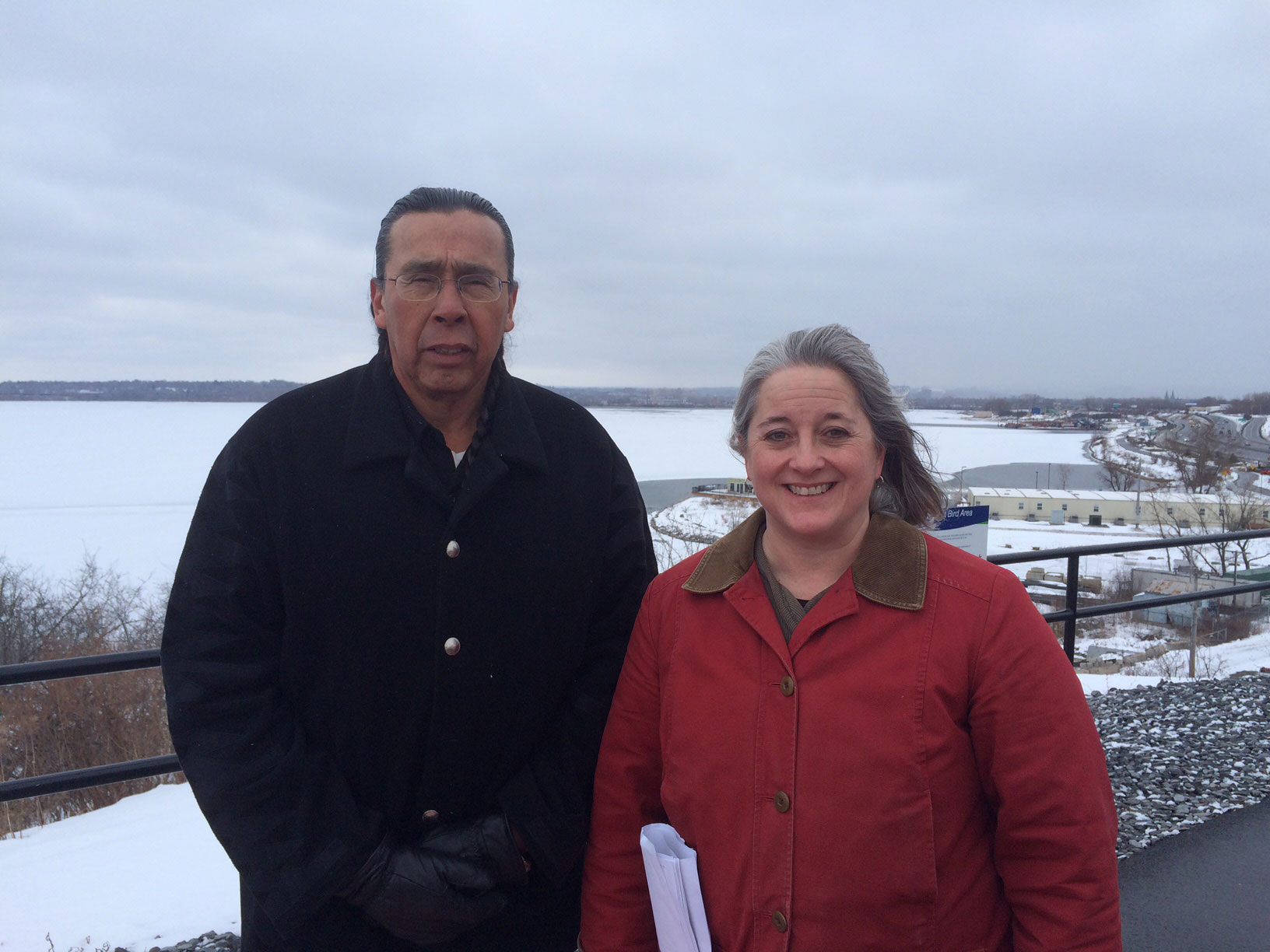
Onondaga Lake – The Onondaga Nation predicted in 2005 that the planned cap over Honeywell’s toxic waste at the bottom of Onondaga Lake would fail. But even they were surprised at how soon their predictions came true. In documents obtained by the Onondaga Nation from the New York State Department of Environmental Conservation through a Freedom of Information request regarding the ongoing Superfund toxic waste remediation at Onondaga Lake, the truth came out: the cap had failed three times already.
This information was shared with the public through an article published on Syracuse.com on Thursday, showing areas where sand being put down on the bottom of the lake to bury contaminated sediments slid, contaminating another 40 acres of sediment.
“From the start, the remedy agreed upon by New York State and Honeywell has been a cover-up, not a clean-up,” remarked Sidney Hill, Tadodaho of the Onondaga Nation and member of the Council of Chiefs. “That cover isn’t working, and will likely fail again in the future. The waste at the bottom of the lake is unstable and more needs to be removed.”
The lake’s pollution began in the 1880s when the Solvay Process Company (which later became Allied Chemical and then Honeywell) began dumping waste into the lake and around its shoreline. Over 165,000 pounds of mercury were discharged into the lake, along with a toxic cocktail of other substances. By 1950, Onondaga Lake’s shores were ringed by massive wastebeds with a pH so alkaline nothing would grow on them.
The 1980 U.S. Superfund law required Honeywell to clean up the lake. New York State and Honeywell consented on a remedy in 2005. The Onondaga Nation hired the same experts New York State used on the Hudson River to analyze and comment on the plan. Among their findings was this prescient statement: “slope failure is a concern within the in-lake waste deposit.”
Honeywell began its dredging operation in 2012 and completed it in 2014, having removed 2.2 million cubic yards of contaminated sediments from the bottom of the lake. Removing all of the contaminated sediments, however, would require removing an additional 9.5 million cubic yards. Eighty percent of all sediments identified as contaminated remain on the Lake bottom.
“Scientists have been noting the return of fish and birds to the lake,” observed Hill. “Mercury left in the lake directly affects all the fish, birds and humans who eat the fish. It always will. Mercury does not go away.”
“These toxic sediments should be moved to a modern, well-designed, well-regulated hazardous waste landfill,” noted Lowry, “but the DEC and Honeywell have essentially decided to create a landfill at the bottom of Onondaga Lake.”
Honeywell International is responsible for 139 Superfund sites around the country, more than any other corporation. The stories are similar–the jobs are all gone overseas, but the toxins remain to poison the communities for generations to come. Honeywell’s annual profits are $4.3 billion. The Onondaga Nation’s experts calculated a full cleanup of the lake bottom would cost only $2.6 billion.
“People want to be able to treat Onondaga Lake like a lake,” observed Hill. “We should be able to swim in it, fish in it, and eat the fish we catch. We should be able to drink water from a lake, just like Syracuse gets Skaneateles Lake water. That is what a lake should be, and what this lake once was. But you have to clean out a wound before it can heal.”
“We still have hope for Onondaga Lake’s future. It is our future too.”
